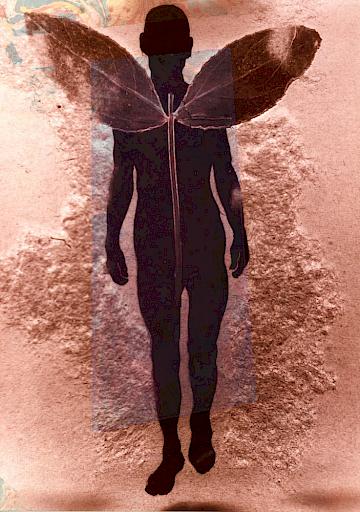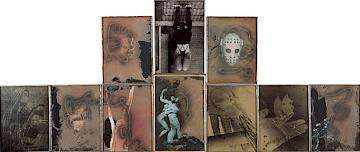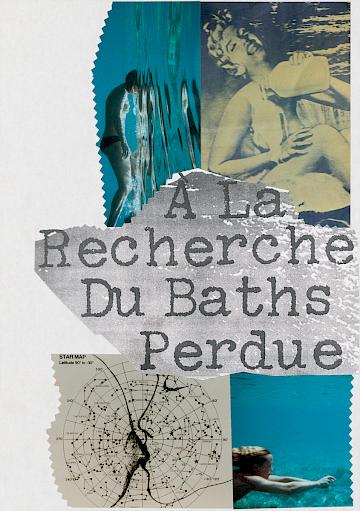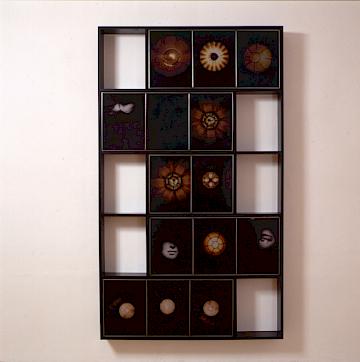Birgit Jürgenssen
Birgit Jürgenssen's work strikes by the wide range of contents and forms it encompasses. Its roots lie both in the budding female art movement of the 70s (e.g. the exhibition 'Magna-Feminismus in der Kunst' organised by Valie Export at the Galerie nächst St.Stephan in 1975) and in Surrealist domains (e.g. her 'histoire naturelle, Naturgeschichte' (ph1224) , 1979/1980 or 'Schwarzer Honig der Träume' (ph730)
, 1979/1980 or 'Schwarzer Honig der Träume' (ph730) , 1989/92), as well as, since the end of the 70s, in a female-dominated actionism.
, 1989/92), as well as, since the end of the 70s, in a female-dominated actionism.
This diversity also extends to the media she uses, Among them one finds drawing and painting, photography and multi-media work, but also objects and body action.
From about 1980, Birgit Jürgenssen's work has been marked by a narrative element of a quality rarely to be found in Austria (from 'Gedanke auf dem Bad' 1980 to 'A La Recherche Du Baths Perdue' (z442) 1997). The very complex, frequently encrypted narrative elements may also be found in the 'Früher oder Später' catalogue accompanying an exhibition at the Upper Austrian Landesgalerie in Linz in 1998. One example is her multi-media panel wit the inscription 'Here or there or in the midst or nowhere' (Hubert Fichte) (ph731)
1997). The very complex, frequently encrypted narrative elements may also be found in the 'Früher oder Später' catalogue accompanying an exhibition at the Upper Austrian Landesgalerie in Linz in 1998. One example is her multi-media panel wit the inscription 'Here or there or in the midst or nowhere' (Hubert Fichte) (ph731) dating from 1989. Special attention must be drawn to 'Regal für Raymond Chandler' (s31)
dating from 1989. Special attention must be drawn to 'Regal für Raymond Chandler' (s31) (1991), for which the artist wrote the text 'The place of images is in the living body that is inseparable from thought' (published in the catalogue, p. 116), Kevin Henderson asked Birgit Jürgenssen about her relationship to the famous mystery-writer Raymond Chandler:
(1991), for which the artist wrote the text 'The place of images is in the living body that is inseparable from thought' (published in the catalogue, p. 116), Kevin Henderson asked Birgit Jürgenssen about her relationship to the famous mystery-writer Raymond Chandler:
'KH: Raymond Chandler is mentioned in the catalogue. His ability to hold a reader's attention while describing thoroughly ordinary scene is unique. Would you comment on Chandler's writing in regard to your own work.
BJ: I was trying to simplify what I was doing yet also keep the complexity that Chandler attains. It allows more room for my own ideas. There is a freedom in his work that allows for movement, and I like that.'
If I am to summarise the central aspects of Birgit Jürgenssen's work I would say that it is situated in a field of tension between projection and perception. The projections are internal and external, individual and collective (social and, especially, female). And the perceptions are individual and quasi-collective (social). Her perceptions are 'different' in the sense that they are ignored or even repressed by society. In this regard, the multi-faceted work of Birgit Jürgenssen is truly emancipatory.